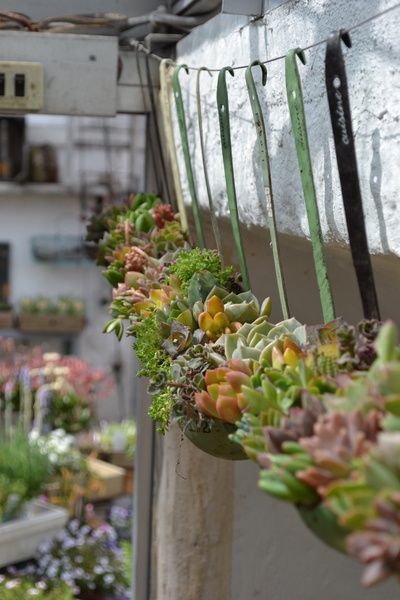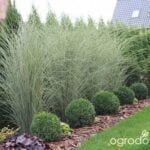Looking for gravel ideas for small front gardens? Gravel is a versatile and low-maintenance option that can add texture and visual interest to your outdoor space. In this article, we’ll explore the benefits of using gravel in small front gardens, as well as creative design ideas, plant pairings, and maintenance tips to help you make the most of this landscaping option.
Using gravel in small front gardens offers numerous advantages. Not only does it provide excellent drainage and erosion control, but it also requires minimal upkeep compared to traditional grass or plant-based landscaping. Additionally, gravel comes in a variety of sizes, colors, and textures, giving you plenty of options to customize the look and feel of your outdoor space.
In the following sections, we’ll delve into different types of gravel available, design and layout ideas for incorporating gravel into your small front garden, low maintenance landscaping techniques, as well as tips on plant pairings, creating pathways and garden borders with gravel, managing water drainage, erosion control, and maintaining your gravel garden. Whether you’re looking for a modern minimalist aesthetic or a more naturalistic approach, there’s a gravel idea that’s perfect for your small front garden.
Types of Gravel
Gravel is a versatile material that can add texture, color, and visual interest to small front gardens. When it comes to choosing the right type of gravel for your space, there are several options to consider. One popular option is pea gravel, which is small and smooth, making it ideal for pathways and ground cover.
Another choice is crushed stone gravel, which comes in a variety of sizes and is great for adding depth and dimension to the garden. Additionally, there are different colors of gravel available, from natural earth tones to bolder hues, allowing homeowners to personalize their front garden’s aesthetic.
In addition to size and color, the texture of the gravel is also an important consideration. Some gravels have a more rounded shape, while others have angular edges. The texture of the gravel can impact not only the look of the garden but also its functionality. For example, smoother gravels are often preferred for pathways as they are easier to walk on, while coarser gravels may be better suited for areas where erosion control is a concern.
When selecting gravel for a small front garden, it’s essential to take into account both the practical and aesthetic aspects. By considering the overall design theme and intended use of the gravel – whether for pathways, ground cover, or borders – homeowners can make an informed decision that adds beauty and functionality to their outdoor space.
| Types of Gravel | Considerations |
|---|---|
| Pea Gravel | Small and smooth; ideal for pathways and ground cover. |
| Crushed Stone Gravel | Variety of sizes; adds depth and dimension. |
| Texture | Rounded vs angular; impacts both aesthetics and functionality. |
Design and Layout
Creating Texture and Depth
When it comes to designing a small front garden with gravel, one of the key elements to consider is creating texture and depth. Using different sizes and colors of gravel can add visual interest and dimension to the space. Consider using larger, lighter-colored gravel as a focal point or pathway, and then fill in with smaller, darker-colored gravel for contrast. This will help create an eye-catching design that makes the most of the limited space.
Accent Features
Incorporating accent features into the layout of a small front garden can also enhance the overall aesthetic. For example, adding a decorative gravel circle around a tree or fountain can draw attention to these focal points. Additionally, using pea gravel in between stepping stones or pavers can create a charming pathway that adds character to the garden. These accent features not only contribute to the visual appeal but also offer practical functionality for navigating the space.
Container Gardening
For those looking to add greenery to their small front garden alongside gravel, container gardening provides a versatile option. Placing potted plants strategically throughout the gravel layout can soften the look of the space while allowing for easy changes or rearrangements as desired. Whether it’s colorful annuals or trailing vines, choosing container plants that complement the gravel can enhance the overall design and bring life to the garden.
Low Maintenance Landscaping
Gravel can be an excellent choice for creating low maintenance landscaping in small front gardens. Its versatility and durability make it ideal for those looking to minimize the need for regular upkeep while still achieving a stylish and attractive outdoor space.
When it comes to low maintenance landscaping with gravel, there are several options to consider:
- Choose the Right Type: Selecting the appropriate type of gravel is essential for achieving a low maintenance garden. Opt for larger, rounded gravel that is less likely to shift or disperse, reducing the need for frequent repositioning.
- Use Weed Barrier: Installing a weed barrier beneath the layer of gravel can help prevent weed growth, saving time and effort on regular weeding tasks.
- Strategic Planting: Consider incorporating drought-tolerant plants or succulents into your gravel garden. These plants require minimal watering and upkeep, perfect for creating a low maintenance landscape.
In addition to these tips, properly planning the layout and design of your gravel garden can also contribute to its low maintenance nature. By creating defined areas and pathways using gravel, you can reduce the need for ongoing trimming and edging typically associated with traditional gardens.
With these ideas in mind, it’s clear that using gravel in small front gardens can significantly decrease the time and effort required for maintaining a beautiful outdoor space. By implementing smart design choices and selecting the right materials, homeowners can achieve a low maintenance landscape without sacrificing style or appeal.
Plant Pairings
When it comes to designing a small front garden with gravel, the choice of plants plays a crucial role in enhancing the overall aesthetic and creating a harmonious outdoor space. Here are some plant pairings that work well with gravel in small front gardens:
- Succulents: Plants like sedum, sempervivum, and aeonium are perfect for pairing with gravel due to their low water requirements and ability to thrive in rocky, well-draining soil. Their unique textures and colors add visual interest to the gravel garden.
- Ornamental Grasses: Grasses such as blue fescue, feather reed grass, and little bluestem bring movement and softness to the gravel garden, creating a beautiful contrast against the rocky surface. These grasses are also low-maintenance and can withstand dry conditions.
- Mediterranean Herbs: Herbs like lavender, rosemary, and thyme not only thrive in gravel gardens but also release fragrance when brushed against or walked on. Their aromatic qualities add an extra sensory dimension to the small front garden.
In addition to these plant pairings, it’s important to consider the overall color scheme and height variations when selecting plants for a gravel garden. By combining different foliage colors, textures, and heights, you can create a visually dynamic landscape that complements the gravel surface.
Tips for Planting in Gravel
- Prepare the soil beneath the gravel layer by adding organic matter and ensuring proper drainage.
- Use raised beds or containers for planting to prevent direct contact between plant roots and compacted gravel.
- Consider using drought-tolerant plants that can thrive in the well-draining environment of a gravel garden.
By carefully selecting plant pairings and following these planting tips, you can create an inviting and beautiful small front garden that seamlessly integrates gravel with lush greenery.
Pathways and Edging
When it comes to small front gardens, incorporating gravel into the design can create visually appealing pathways and define garden borders. The use of gravel for pathways not only adds a decorative element to the garden but also serves a practical purpose by creating a durable and low-maintenance surface. Additionally, using gravel for edging can help to clearly delineate different areas within the garden, providing structure and organization.
One creative idea for using gravel in small front gardens is to create meandering pathways that add visual interest and guide visitors through the space. By varying the width and shape of the pathways, as well as incorporating curves and turns, you can create a sense of exploration and discovery within the garden. Using different types of gravel – such as pea gravel or crushed stone – can also add texture and depth to the pathways, enhancing their aesthetic appeal.
In terms of edging, using gravel can provide a natural and informal border for garden beds or paved areas. By simply lining the edges with a layer of gravel, you can define the boundaries of different sections within the garden while maintaining a cohesive and harmonious overall look.
In addition, using decorative stone or larger rocks as edging accents can further enhance the visual impact of the gravel borders. Overall, incorporating gravel into pathways and edging in small front gardens offers both functional benefits and opportunities for creative expression.
| Pathways | Edging |
|---|---|
| Create visually appealing pathways | Define garden borders |
| Add texture and depth | Natural and informal border |
Drainage and Erosion Control
When it comes to small front gardens, one important consideration is how to manage water and prevent erosion. Gravel can play a crucial role in addressing these issues while adding aesthetic appeal to the garden.
Managing Water With Gravel
One of the key benefits of using gravel in a small front garden is its ability to aid in drainage. When strategically placed, gravel can help absorb excess water, preventing pooling and potential water damage to plants and structures. Additionally, gravel can help protect against soil compaction, allowing for better absorption of rainwater and reducing runoff.
Preventing Erosion
In areas where erosion is a concern, utilizing gravel can be an effective solution. By creating pathways or covering sloped areas with gravel, you can help stabilize the soil and minimize the risk of erosion caused by heavy rainfall or wind. This not only protects the garden itself but also contributes to the overall maintenance and longevity of the small front garden.
Choosing the Right Gravel for Drainage and Erosion Control
When selecting gravel for drainage and erosion control in a small front garden, it’s essential to consider the size and texture of the stones. Coarse gravels are ideal for improving drainage, while finer gravels can be more effective at preventing soil erosion. It’s also important to choose colors that complement your overall garden design while serving their practical purposes.
Maintenance Tips
Gravel gardens are an excellent option for small front spaces due to their low maintenance requirements and versatility. Once you have created a beautiful gravel garden, it is important to maintain it properly to ensure its longevity and appeal. Here are some maintenance tips for keeping your small front gravel garden looking its best.
Firstly, regular weeding is essential to keep your gravel garden in top condition. As weeds can still grow through the gravel, it’s important to routinely inspect the area and remove any unwanted plants. This will help maintain the neat and tidy appearance of your small front garden.
Secondly, raking the gravel periodically can prevent it from becoming compacted and keep it looking fresh. Over time foot traffic or weather can cause the gravel to shift or compact, so giving it a light rake every few weeks will help maintain its even distribution and appearance.
Lastly, be mindful of drainage in your small front gravel garden. Check for any areas where water may be pooling and make sure that the gravel is still effectively managing water flow within the space. Additionally, if erosion becomes an issue, consider adding more gravel or adjusting the layout to prevent further damage.
By following these maintenance tips, you can ensure that your small front gravel garden remains an inviting and low-maintenance feature of your home’s exterior. With proper care, you can continue to enjoy the beauty and benefits of a well-maintained gravel garden for years to come.
Conclusion
In conclusion, gravel offers numerous benefits and versatile design options for small front gardens. Its low maintenance nature, wide variety of types, and ability to complement a range of plantings make it an ideal choice for homeowners looking to create a visually appealing and easy-to-care-for outdoor space.
By choosing the right type of gravel – whether in terms of size, color, or texture – and incorporating it creatively into the layout of a small front garden, homeowners can achieve a beautiful and functional landscape that requires minimal upkeep. Additionally, using gravel for pathways and edging helps define garden borders and create a sense of order in the space.
Furthermore, gravel also plays a vital role in managing water drainage and preventing erosion in small front gardens. By utilizing gravel in strategic areas, homeowners can ensure that their outdoor space remains structurally sound and visually pleasing. Overall, implementing gravel ideas for small front gardens is a smart choice for those seeking an attractive, low-maintenance landscaping solution.
Frequently Asked Questions
How Do You Make a Gravel Area Look Nice?
You can make a gravel area look nice by adding some decorative elements such as potted plants, outdoor furniture, or a fire pit. Creating defined borders with stones or bricks can also enhance the appearance.
What Is the Best Color Gravel for a Garden?
The best color gravel for a garden depends on personal preference and the overall aesthetic of the garden. However, earthy tones like tan, brown, or gray are popular choices as they blend well with most landscaping and highlight the greenery.
Why Not to Use Pea Gravel?
Pea gravel is not ideal for high-traffic areas or driveways as it tends to shift and scatter easily underfoot. It also has a tendency to get stuck in shoes and be tracked indoors, making it less than ideal for areas with heavy foot traffic.

Welcome to my gardening blog! I am passionate about plants and enjoy sharing my knowledge and experiences with others. In this blog, I will write about everything related to gardening, from tips on how to get started to updates on my own garden projects.





